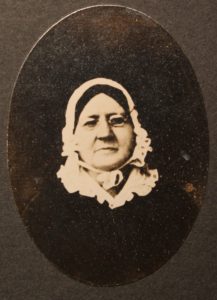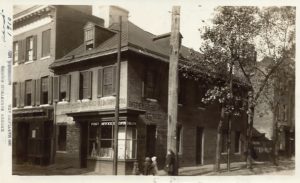You have probably passed the three-story brick house standing at the corner of Baltimore’s Pratt and Albemarle Streets numerous times on your way east along Pratt Street or walking toward the Inner Harbor. Walking by, you may have missed the bronze plaque designating the building as a National Historic Landmark, and you might not have realized that this more than 200-year-old building is the birthplace of the most famous American flag to ever fly.

Built in 1793, the Star-Spangled Banner Flag House stands as a testament both to Baltimore’s role in early American history and the dedication of Baltimore City to the preservation of its historic landmarks. From 1807 until her death in 1857, the home was the residence of Mary Young Pickersgill, the head of household and proprietor of a flag making business. You may not recognize Mrs. Pickersgill’s name, but you’ve certainly seen plenty of images of the Star-Spangled Banner, the 15-star, 15-stripe, 30’ x 42’ flag she crafted over a six-week period in the summer of 1813. The flag went on to become an American icon, flying over Fort McHenry during the Battle of Baltimore in September 1814 and as a permanent fixture in the Smithsonian’s collection. What is not often discussed is the context of the historic property and its role in the building of Jonestown, Baltimore’s oldest neighborhood.
The preservation of the Flag House and its designation as a landmark is due to the singular event of the creation of the Star-Spangled Banner, and it has impacted the lives of the residents of Jonestown for the past 150 years after Mrs. Pickersgill’s residence. Purchased by Baltimore City in 1927, the Flag House opened that year to the public as a museum and educational site and has remained as such for the past 90 years.
From 1867 until 1927, the Flag House transformed with the community, evolving to meet the needs of Jonestown and Little Italy residents, with a growing immigrant population. While the second floor remained a dwelling, the first floor changed to better accommodate the inhabitants of Jonestown. Businesses that occupied the Flag House include a shoe repair shop run by Jewish immigrant Mortz Zimmerman, a post office, an Italian pharmacy, and even a bilingual steamship ticket office. Today, with more than 15,000 unique archaeological artifacts held in the Flag House collection, the museum interprets the home from a War of 1812 perspective and as an integral part of the Jonestown community.

Alterations to the façade and interior of the historic house for retail space eventually threatened its structural health. In the late 1930s, under the guidance of the first curator, Arthur Sewell, the Flag House underwent several stages of preservation and restoration, and eventually the Pratt Street facade was restored to an approximate 1793 appearance.
The Flag House showcases quintessential 18th Century architecture and features many structural conventions of the time, including a partially curved wall at the junction between the main home and the wing that houses the kitchen. “Today, the interior of the house reflects an approximate 1813 dwelling for someone of Mary’s economic status living in Baltimore City. Visitors encounter the home as it may have appeared at the time of Mrs. Pickersgill’s residence and learn about the Flag House’s history in Jonestown in the permanent exhibit, Family of Flag Makers.
In 2017, the Star-Spangled Banner Flag House is celebrating 90 years as a historic house museum and historic landmark. For more information about events and celebrations visit www.flaghouse.org.
Disclaimer: The views and opinions expressed on our blog do not necessarily reflect the views or position of Maryland Humanities or our funders.

